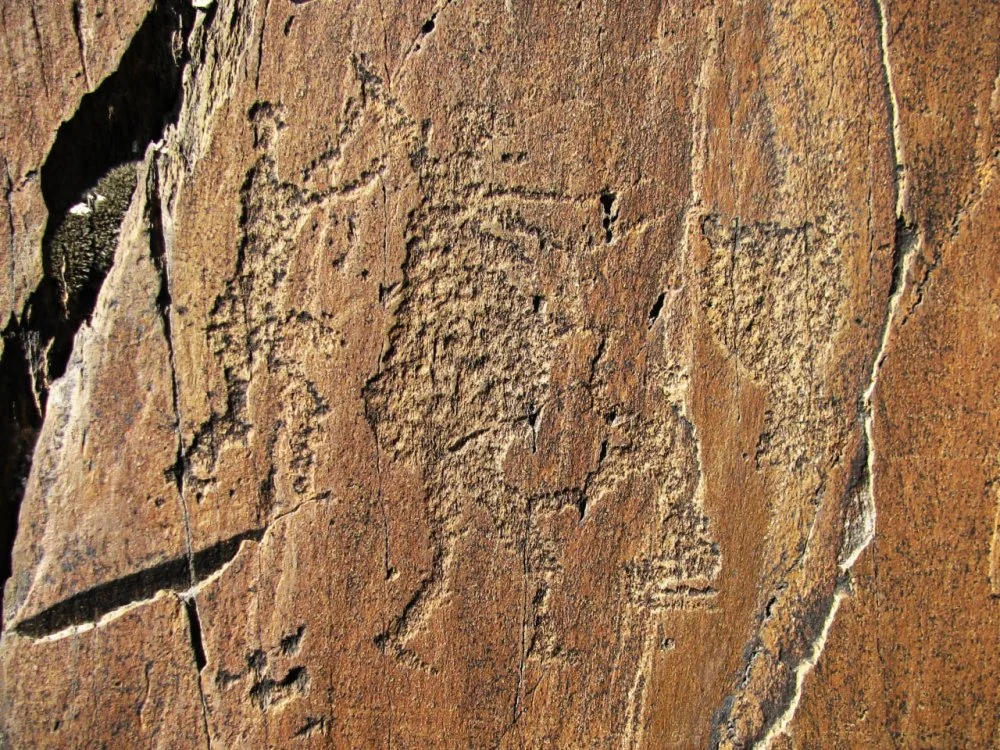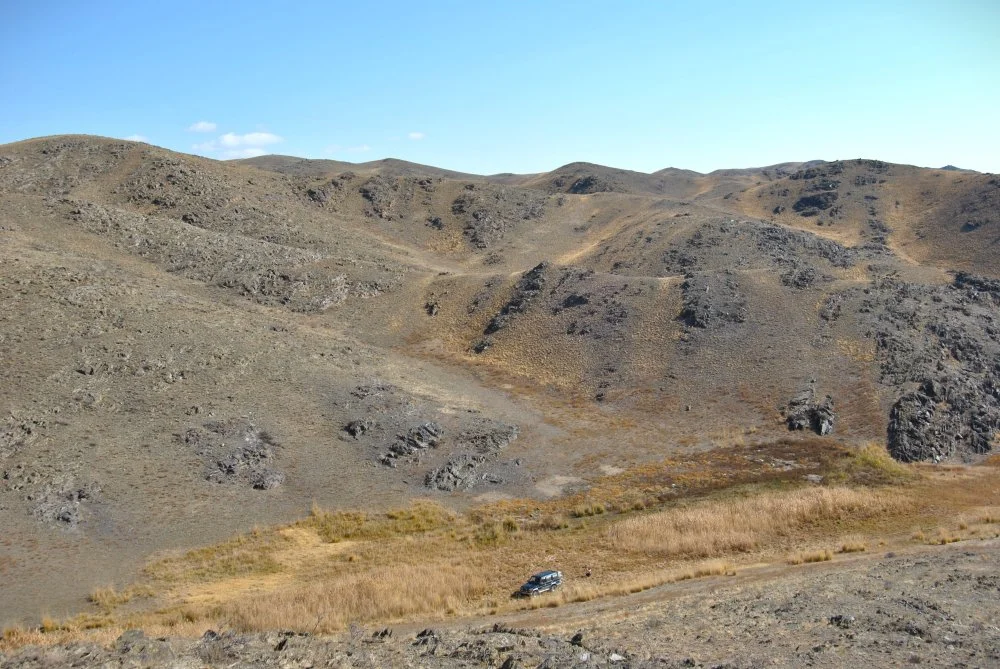The Cauldron and the Woman
A Meal for Millenia

Kazan. Kulzhabasy/Olga Gumirova
Everyday household items were rarely depicted on the petroglyphs of the Bronze and Early Iron ages. Indeed, it often seems that people thought that there was no point expending considerable effort immortalizing ephemeral, mundane items lacking sacred value. Based on this, it can be assumed that the carefully depicted cauldron in a scene at the Quljabasy petroglyph cluster in the Chu-Ili Range of the Jambyl region included in the composition was not just an ordinary cooking attribute.
This petroglyph cluster featuring the drawing of a cauldron is situated in a gorge whose upper reaches border the remains of a large ancient settlement.
It is known that among the Kazakhs and many Turkic peoples, the cauldron, the kazan, is a symbol of prosperity. Numerous folk sayings, adages, and tales revolve around this vessel. People commonly refer to it as a kara kazan rather than simply a kazan. In Turkic languages, the word ‘kara’ has multiple meanings beyond ‘black’, including ‘northern’, ‘powerful’, ‘dangerous’, and ‘sacred’. The term ‘sacred’ is particularly relevant when describing this kazan.

Kulzhabasy. Scene with a cauldron/Olga Gumirova
A familial cauldron, especially one that had been used for many years, was not given, even temporarily, to others to use—it was considered bad luck. It was passed down to the children of the house as a blessing for their continued prosperity, to sons as an inheritance, and to daughters as part of their dowry.
There is no doubt that the composition featuring the cauldron has sacred significance. The approximated dating varies from the late second millennium BCE to the fifth to third centuries BCE.

Slab with petroglyphs. Image/Olga Gumirova
At the center of the ancient composition is a woman giving birth. Behind her stands a man raising an object, possibly a hammer, while another man kneels in front of her, pressing a knife to her abdomen.
Undoubtedly, the scene is dramatic, but it has nothing to do with violence and death. The cauldron, placed to the right of the figures, serves as proof of this.
Scholars do not agree on a single interpretation of this scene, though they all agree that the drawing portrays some ritual related to childbirth.

One of the Kulzhabasy gorges /Olga Gumirova
But what then does the cauldron have to do with this painting, and what role does it play here?
Among many peoples, the cauldron is considered a symbol of the feminine aspect, and ethnographers have recorded a Kazakh custom of opening all cauldrons, covered dishes and chests, and untying knots during difficult childbirths. Another Kazakh tradition that continues to this day is to begin boiling organ meats at the onset of labor to expedite and ease the process of childbirth. It is believed that just as the liver cooks quickly in the cauldron, the delivery of the child will also be swift.
We don’t know what tribe or clan the ancient artist-shaman who depicted this scene in the Quljabasy Mountains belonged to, and systematic research has not been conducted in the area. However, the connection between this millennia-old drawing and Kazakh magical rituals involving the cauldron during childbirth is evident.



